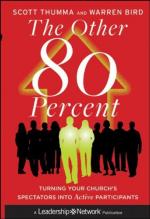I have been led into this Speculation by the Characters I have heard of a Country Gentleman and his Lady, who do not live many Miles from Sir ROGER. The Wife is an old Coquet, that is always hankering after the Diversions of the Town; the Husband a morose Rustick, that frowns and frets at the Name of it. The Wife is overrun with Affectation, the Husband sunk into Brutality: The Lady cannot bear the Noise of the Larks and Nightingales, hates your tedious Summer Days, and is sick at the Sight of shady Woods and purling Streams; the Husband wonders how any one can be pleased with the Fooleries of Plays and Operas, and rails from Morning to Night at essenced Fops and tawdry Courtiers. The Children are educated in these different Notions of their Parents. The Sons follow the Father about his Grounds, while the Daughters read Volumes of Love-Letters and Romances to their Mother. By this means it comes to pass, that the Girls look upon their Father as a Clown, and the Boys think their Mother no better than she should be.
How different are the Lives of Aristus and Aspasia? the innocent Vivacity of the one is tempered and composed by the chearful Gravity of the other. The Wife grows wise by the Discourses of the Husband, and the Husband good-humour’d by the Conversations of the Wife. Aristus would not be so amiable were it not for his Aspasia, nor Aspasia so much [esteemed [2]] were it not for her Aristus. Their Virtues are blended in their Children, and diffuse through the whole Family a perpetual Spirit of Benevolence, Complacency, and Satisfaction.
C.
[Footnote 1: that]
[Footnote 2: to be esteemed]
* * * * *
No. 129. Saturday, July 28, 1711. Addison.
’Vertentem
sese frustra sectabere canthum,
Cum rota posterior
curras et in axe secundo.’
Pers.
Great Masters in Painting never care for drawing People in the Fashion; as very well knowing that the Headdress, or Periwig, that now prevails, and gives a Grace to their Portraitures at present, will make a very odd Figure, and perhaps look monstrous in the Eyes of Posterity. For this Reason they often represent an illustrious Person in a Roman Habit, or in some other Dress that never varies. I could wish, for the sake of my Country Friends, that there was such a kind of everlasting Drapery to be made use of by all who live at a certain distance from the Town, and that they would agree upon such Fashions as should never be liable to Changes and Innovations. For want of this standing Dress, a Man [who [1]] takes a Journey into the Country is as much surprised, as one [who [1]] walks in a Gallery of old Family Pictures; and finds as great a Variety of Garbs and Habits in the Persons he converses with. Did they keep




